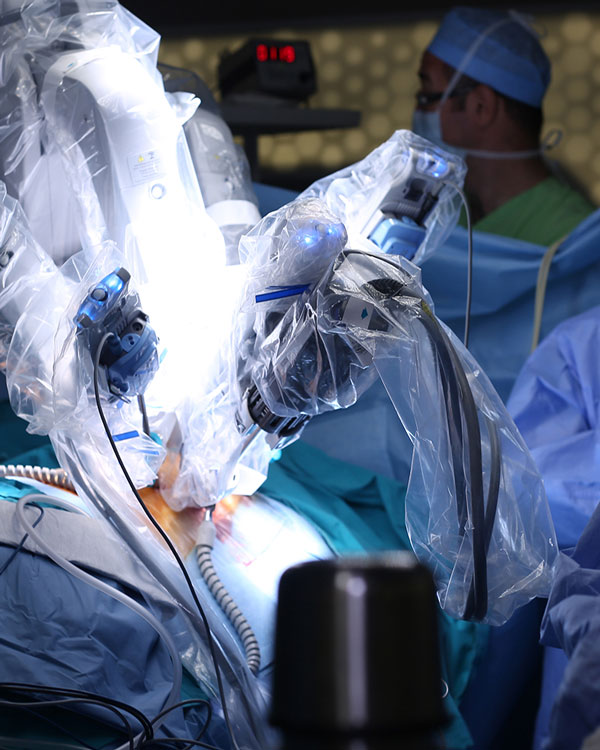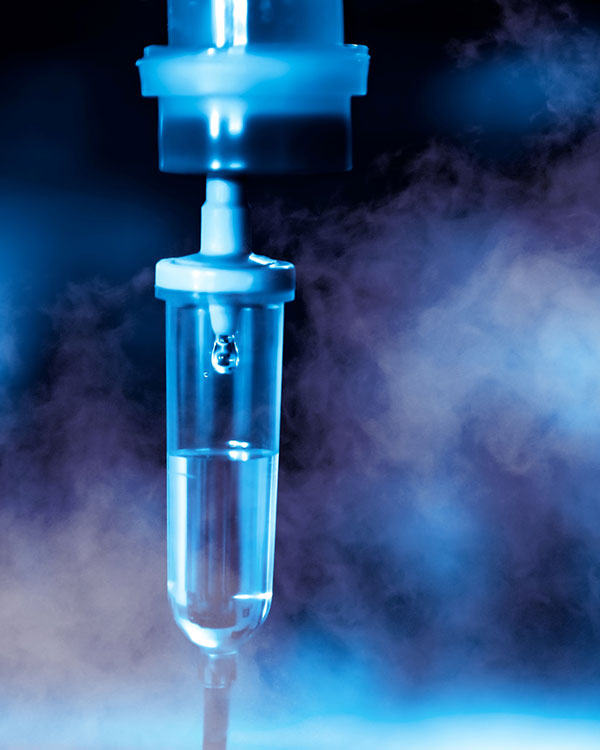Asbestos &
lung cancer lawsuits.
Asbestos causes pleural mesothelioma, but it also causes lung cancer.
Pleural mesothelioma and asbestos lung cancer are both diseases of the respiratory system. The difference is that lung cancer affects the cells INSIDE the lungs, while mesothelioma affects the cells OUTSIDE the lungs.
And just as with mesothelioma, asbestos lung cancer can be fought with medicines. And it can be fought with asbestos lung cancer lawsuits.
People at Risk of Getting Asbestos Lung Cancer
Asbestos exposure cases
More men than women have been exposed to asbestos. As a result, men are more likely to develop asbestos-related lung cancer.
The elderly
Asbestos-related lung cancer usually strikes after age 65. That’s because of the long latency between exposure and disease onset.
Smokers
Smoking weakens the body’s natural ability to prevent trapped asbestos from mutating healthy cells into cancerous ones.
Lung Cancer By the Numbers:

The rank of lung cancer (asbestos-related or otherwise) compared to all other types of cancer in terms of case count.

The rank of lung cancer compared to all other types of cancer as a cause of death.

The number of people who develop asbestos lung cancer for each person who develops pleural mesothelioma.
Asbestos-related Lung Cancer Follows the Same Pattern as Pleural Mesothelioma
The starting point for both is inhalation of asbestos fibers.
These fibers then become trapped in the lungs.
Years go by. During that time, the fibers trigger unhealthy changes in some of the lung’s cells.
The unhealthy cells are supposed to self-destruct to prevent neighboring cells from also becoming unhealthy. However, the presence of asbestos turns off the self-destruct switch.
Unhealthy cells that fail to self-destruct are supposed to be purged by the body’s immune system. Asbestos fools the immune system into seeing the unhealth cells as healthy. The immune system then ignores those unhealthy cells.
The unhealthy cells multiply and grow into a cancerous tumor mass.
Cells from the growing mass split away and reestablish themselves in other parts of the body. This is known as metastasis.
The four stages of
asbestos lung cancer:
- GROWING
- SPREADING
- FAR ADVANCED
Asbestos Lung Cancer Lawsuits. The Path to Compensation.
People who develop lung cancer as a result of exposure to asbestos may not have to bear the full weight of the disease’s financial consequences.
It is important to keep in mind that those financial consequences involve more than just the cost of treatment. They may also include loss of the ability to earn a living. With that loss can come difficulty paying bills, such as the monthly rent or mortgage. And with that difficulty to pay can come a great deal of emotional turmoil added to the physical pain and suffering of the cancer itself.
These and other financial consequences of asbestos lung cancer can be reduced or even erased by seeking compensation for them.
Not counting reimbursement from medical insurance, workers’ compensation funds, and unemployment filings, there are basically three options available by which an asbestos lung cancer patient (or surviving family members) can seek to have the financial consequences of the disease mitigated or eliminated.
All are best handled by a competent attorney. The three options are…
- Asbestos-related lung cancer lawsuit.
Learn more here. - Asbestos-related lung cancer trust claim.
Learn more here. - Veterans’ Administration benefits for former servicepeople with asbestos-related lung cancer.
Learn more here.
Types of Mesothelioma
NSCLC
Non-Small Cell Lung Cancer
- 84% of all lung cancers
- Subtypes:
- Adenocarcinoma
- Squamous cell carcinoma
- Large cell carcinoma
SCLS
Small Cell Lung Cancer
- 13% of all lung cancers
- Subtypes:
- None
- Symptoms typically appear late
- Challenging to treat
The adenocarcinoma subtype of NSCLC grows in the alveoli (those are small air sacs inside the lungs). Four out of every 10 NSCLC cases involve the adenocarcinoma subtype. Even though that is fewer than half the cases, this subtype is the one encountered most often.
The squamous cell carcinoma subtype of NSCLC grows inside the lungs’ airways. Between two and three of every 10 NSCLC cases involve the squamous cell carcinoma subtype.
The large cell carcinoma subtype of NSCLC grows wherever it can take hold within the lungs. Between one and one-and-a-half NSCLC cases involve the large cell carcinoma subtype. Notably, it reaches the metastasis stage faster than do the other two subtypes.
Asbestos Lung Cancer Diagnosis
The symptoms of asbestos-related lung cancer look very much like those of pleural mesothelioma.
Symptoms of asbestos lung cancer usually do not show up until the disease is at an advanced stage (the later it is discovered, the harder it is to treat). For that reason, doctors recommend people who believe they may have been exposed to asbestos (and especially those who also are or were smokers) be medically screened once or twice a year. The idea is to detect asbestos lung cancer at as early a stage as possible (early diagnosis can help by making the patient eligible for the widest range of treatment options).
For best results, screenings should be conducted only by physicians extensively trained and experienced in diagnosing asbestos diseases.
Symptoms of Asbestos Lung Cancer
Cough
Nothing seems to relieve it
Pain
Radiates from the chest
Dysphagia
Food not easily swallowed
Dyspnea
Can’t take deep breaths
Cachexia
Sudden, severe weight loss
Fatigue
No energy to do anything
Hemoptysis
Mucus contains blood
Testing for Asbestos Lung Cancer
These are the tools doctors most commonly use to clinically establish that a person has asbestos lung cancer.
Detailed Medical History
A patient who reports having worked with asbestos or asbestos products is much more likely to have an asbestos disease than one who reports little or no encounters with the mineral. Same for a patient who spent time inside buildings containing asbestos compared to a patient who did not.
Imaging Exams
Radiologic studies such as x-ray, computed tomography (CT scanning), and magnetic resonance imaging (MRI) can reveal the presence of a tumor mass in the lungs. Sophisticated imaging technologies can also show the tumor in three dimensions and in real time.
Lab Analysis
A sample of the tumor removed by biopsy (or a sample of the fluid that builds up inside the chest cavity in response to the inflammation caused by the tumor) can be examined under the microscope and assayed using various test methods. The results of lab analysis are usually conclusive.
Treating Asbestos Lung Cancer
The same treatment options available for pleural mesothelioma are also used to knock down and beat back asbestos-related lung cancer.
Surgery
Chemotherapy
Radiation
Immunotherapy
The goal of surgery is to remove as much of the cancer as possible.
When the cancer is still in its earliest stage, surgeons can cut out most if not all the diseased cells. As they cut, some healthy cells adjacent to the cancerous ones will be removed as well. Surgeons try to cut away as few healthy cells as possible—the more they spare, the better the lungs can function afterward.
When the cancer is at a later stage, surgery becomes much more complicated—especially if the tumor has begun to wrap around important structures within the lungs. In these cases, surgeons may consider removing an entire lung in order to fully eliminate the cancer (there is one lung on each side of the chest, so it is possible to live a happy life with just one remaining).
Chemotherapy involves administering to the patient one or more drugs that are particularly lethal to cancer cells. Chemotherapy is known as a systemic treatment because it works throughout the known as a systemic treatment because it works throughout the entire body. That means cancer cells cannot hide behind other structures—chemotherapy attacks them wherever they may be lurking. Another way of killing cancer cells is by hitting them with a tightly focused beam of ionizing radiation.
The arsenal of anticancer weapons includes immunotherapy. This is a method of boosting the body’s ability to naturally fight cancer. Immunotherapy drugs now available include those that not only strengthen the body’s immune system but that also help it “see” cancer cells disguised as healthy cells (by pulling the mask off cancer cells, the immune system is able to surround them and rush in with special attack cells called phagocytes).
Researchers have demonstrated that the most effective way to combat asbestos lung cancer is to hit it sequentially or even simultaneously with more than one of these treatment options.
More about Surgery for Asbestos Lung Cancer
To qualify as a candidate for asbestos lung cancer surgery, patients must first undergo pulmonary function testing. This gives doctors an idea of whether surgery will leave the lungs with the ability to pull in, process, and expel a sufficient volume of air.
Doctors will also run a series of tests to gauge how well the other key parts of the body are likely to come through an operation on the lungs.
However, passing these tests—even with flying colors—will only be qualifying if there is no sign that the cancer has spread into the lymphatic system. Doctors can make that determination with a special test called a mediastinoscopy exam.
Types of Asbestos Lung Surgery
There are four main types of asbestos lung cancer surgery (and all of them are usually performed with the patient under full anesthesia).
The one a doctor chooses is determined in part by where in the lungs the tumor is located and how big it is. Whichever type of procedure is selected, doctors are more likely to perform surgery if the cancer is still in an early stage. In fact, the earlier the stage, the greater the probability of success.
Recovery from asbestos lung cancer surgery typically takes two to four months, the first week of which will be spent in the hospital under close observation.
These are the four main types of surgery for asbestos lung cancer:
Pneumonectomy
The body contains two lungs. In a pneumonectomy, the lung affected by the cancer is removed. A pneumonectomy can only be performed if the other lung—the one that will remain—is healthy and cancer-free. Pneumonectomy patients very often go on to live happy and productive lives but with limitations (such as having shorter endurance for physical activities).
Lobectomy
The two lungs together contain a total of five lobes. If the cancer is confined to one of those lobes, doctors will remove it rather than an entire lung. The advantage of this procedure over a pneumonectomy is that it leaves more of the lungs intact, which means better pulmonary function after the surgery. And better pulmonary function means in part that the patient should be able to look forward to greater endurance while engaged in physical activities.
Wedge Resection
It is possible to remove not an entire lung lobe but just a part of it—the part actually affected by the tumor. Wedge resection is typically chosen for patients whose lungs are not working all that well to begin with. The value of the procedure in that circumstance is it can maximize the amount of lung capacity remaining after surgery. Also, some patients’ lungs are in such delicate condition that the loss of an entire lobe would be too much.
Sleeve Resection
This procedure is performed when the cancer has taken root in one of the large airways of the lungs. It involves cutting out the affected section of the airway and then reconnecting the healthy sections.
High-tech Asbestos Lung Cancer Surgery Techniques
Surgery for asbestos lung cancer can be performed with techniques that are either invasive or minimally invasive.
Invasive techniques are those that involve large incisions to open the patient’s chest so as to permit direct access to the lungs.
Minimally invasive techniques are those that can be performed without having to make large incisions.
The advantages of minimally invasive techniques are said to be less postoperative pain, less time spent recovering in the hospital, and the potential to get back on one’s feet in weeks rather than months following discharge.
Two minimally invasive techniques coming into ever-wider use are video-assisted thoracic surgery (VATS) and robot-assisted thoracic surgery (RATS). Doctors performing VATS start by creating a small incision in the chest and then feeding into the opening a surgical device with a very tiny camera and light mounted at the front. This allows doctors to see the surgery target as it is being worked on. Doctors may also rely on ultrasound or additional real-time radiologic images to guide other tools to the correct locations in and around the lungs. The idea behind RATS is similar—the main difference is doctors use robotic arms to more precisely position the instruments.
More about Chemotherapy for Asbestos Lung Cancer
Chemotherapy involves the use of specialized drugs that attack and kill cancer cells.
Chemotherapy may be given for the treatment of lung cancer caused by asbestos at any stage of the malignancy, but it is most often administered to patients whose disease has spread well beyond the lungs or who otherwise do not qualify for surgery.
Even so, chemotherapy can be used in conjunction with surgery. Doctors begin administering it weeks before surgery to reduce the size of the tumor as much as possible before the patient goes under the knife. Doctors also administer chemotherapy after surgery to kill off cancer cells that the knife missed.
Additionally, chemotherapy can be combined with radiation therapy. As with its use ahead of and after surgery, doctors administer chemotherapy pre- and post-radiation to maximize the kill-off of cancer cells.
Research has demonstrated that the most potent punch against asbestos lung cancer is delivered when chemotherapy, surgery, and radiation are used in a coordinated, multimodality strategy.
Whether used alone or in tandem with other therapeutics, chemotherapy is administered either orally or by way of intravenous infusion. The preferred method of delivery is intravenous infusion for the reason that it goes straight into the bloodstream rather than having to be absorbed through the stomach. Also, administration via intravenous infusion is easier to regulate, which helps doctors make sure patients receive the exact right doses at the exact right times (intravenous infusions are customarily performed in doctor offices, outpatient centers, or hospital clinics).
Asbestos Lung Cancer Chemotherapy Drugs
The drug cocktail is given at the beginning of (or periodically throughout) a 21- or 28-day cycle. This regimen is repeated over the course of four to six such cycles.
If at the end of the final cycle the cancer shrunk significantly in response to the chemotherapy, doctors may opt to switch to an immunotherapy regimen.
If the cancer did not shrink significantly, doctors may instead order more chemotherapy using a different combination of cocktail drugs.
And if the cancer was stopped but begins growing again after, say, six months, doctors may decide to restart chemotherapy using the same drugs as before or, possibly, different ones.
• Cisplatin
• Carboplatin
• Etoposide
• Irinotecan
• Pemetrexed
More about Radiation for Asbestos Lung Cancer
Radiation is utilized to kill cancer cells, just as does chemotherapy. The difference is that chemotherapy affects cells everywhere in the body, while radiation affects only those in a very narrow area.
There are two types of radiation for asbestos-caused lung cancer.
The first type is called external beam radiation. Here, a radiation-generating device is maneuvered directly or alongside the patient. When the device is precisely positioned it emits a narrow ray of invisible radiation. The ray penetrates the patient’s skin and reaches down into the affected areas of the lung.
Patients are given only a small dose of this radiation, but they receive it five days out of seven over the span of six to eight weeks. When patients receive their next daily dose, the ray generator is repositioned ever so slightly to deliver radiation to cancer cells adjacent those attacked the previous day.
The second type of radiation is called brachytherapy. This is meant for patients who have lung cancer in their airways.
Here, a very small amount of radioactive agent is positioned next to or within the tumor. This is accomplished by doctors with the help of a special tool called a bronchoscope. The radiation from the agent reaches not much beyond the margins of the tumor, so for the most part only the cancer cells are affected. The radioactive agent is extracted a few days later (although in some cases doctors decide it is better to leave it in place and allow the radiation to naturally dissipate over time in order to maximize the cell kill-off).
Asbestos Lung Cancer Survival – Clinical Trials Seek More Answers
Clinical trials are underway in pursuit of more and better treatments for asbestos-related lung cancer.
These trials are a first step toward securing approval from the U.S. Food and Drug Administration to make new treatments widely available.
A clinical trial starts small, with just a few volunteers who have agreed to try a treatment that looked promising when given to laboratory animals. If the new treatment continues to show promise, the number of volunteers is increased. Eventually, the new treatment is tested on a very large number of volunteers.
The main reason people volunteer to participate in clinical trials is it gives them immediate access to cutting-edge treatments that otherwise might be unavailable for years yet to come. Another reason is these futuristic therapies may be available at reduced or no cost to volunteers.
Asbestos Lung Cancer Treatment Costs
It can be very expensive to treat asbestos-related lung cancer.
- Hospitalizations
- Physician Fees
- Consulting Physician Fees
- Medications
- Therapeutic Services
- Home medical equipment rentals
- Increased utility expenses
- Unexpected need to travel long distances for care
- Unexpected need to lodge for days or weeks at a time near distant care centers
Get a FREE case review.
How much compensation can be obtained from these options depends in large part on the knowledge, skill, and experience of the attorney representing the patient. Go here to talk to an asbestos lung cancer-focused lawyer.

About the author…
Jason Steinmeyer is a seasoned trial attorney having joined The Gori Law Firm after an eight-year career as an Assistant Circuit Attorney in St. Louis where he tried over 80 jury trials.

